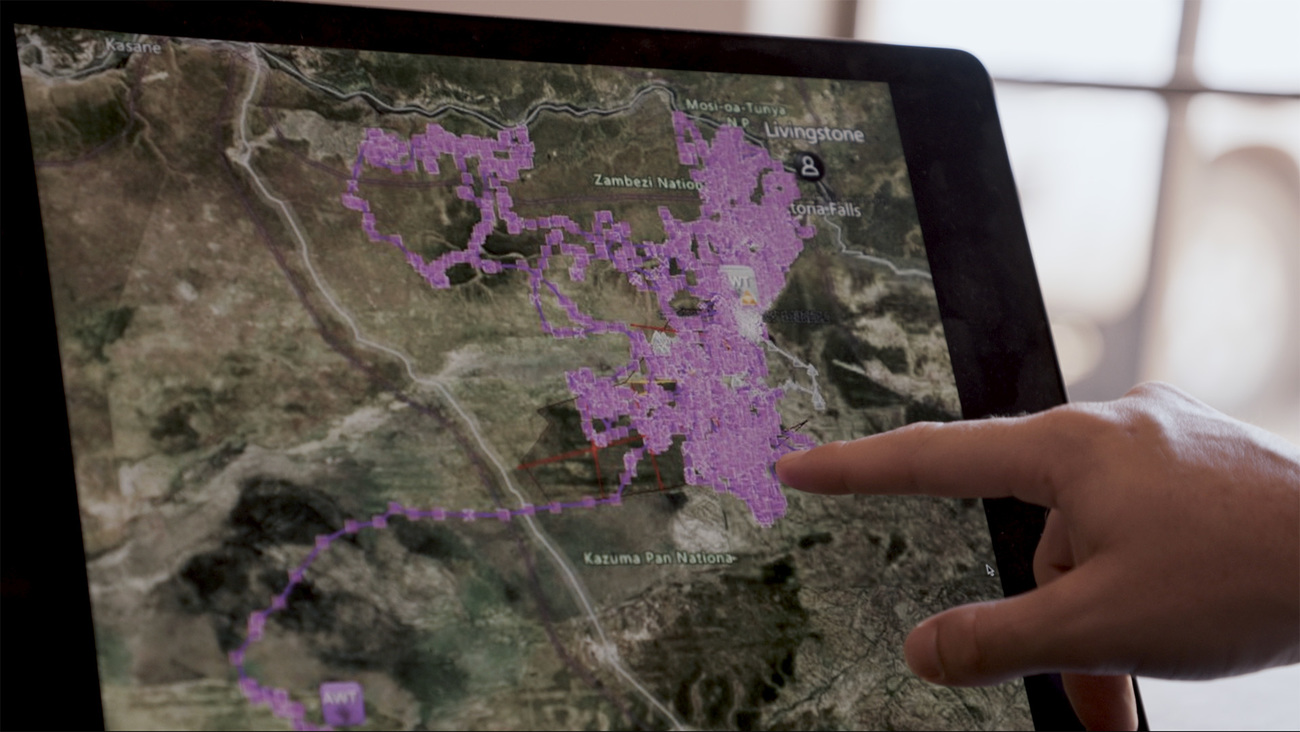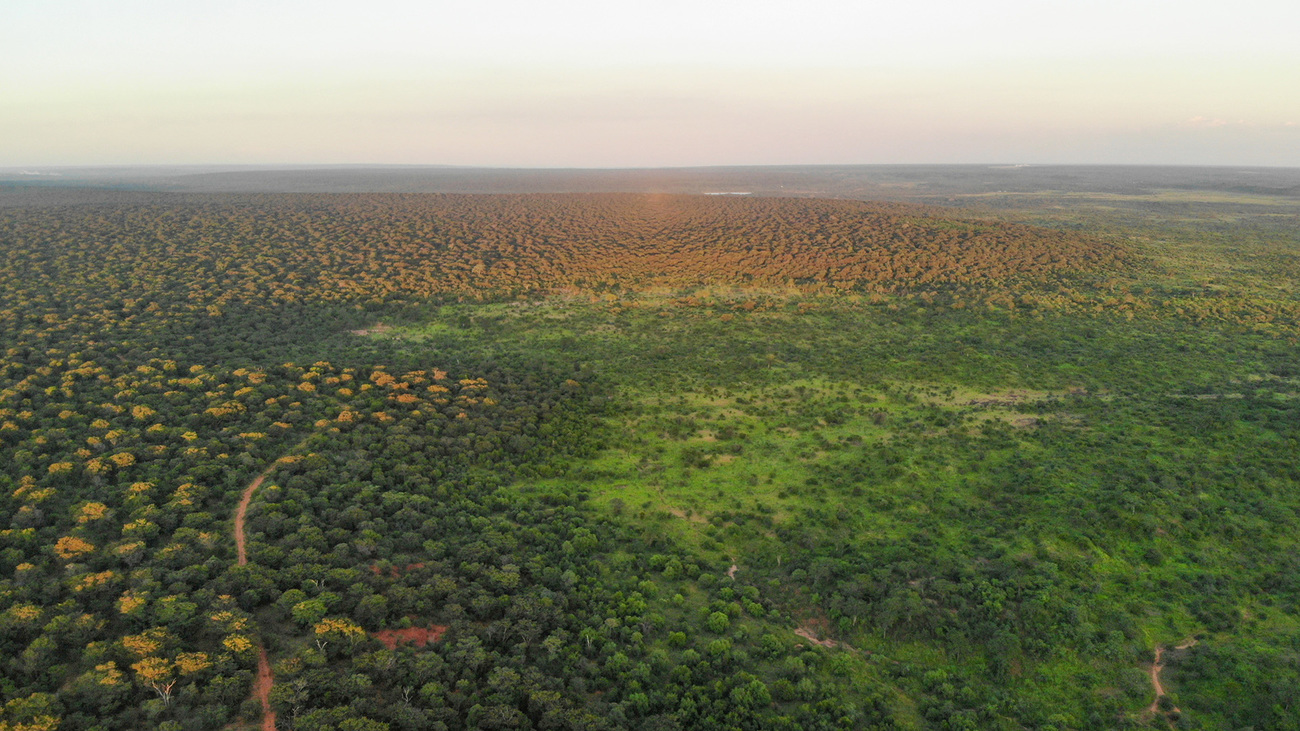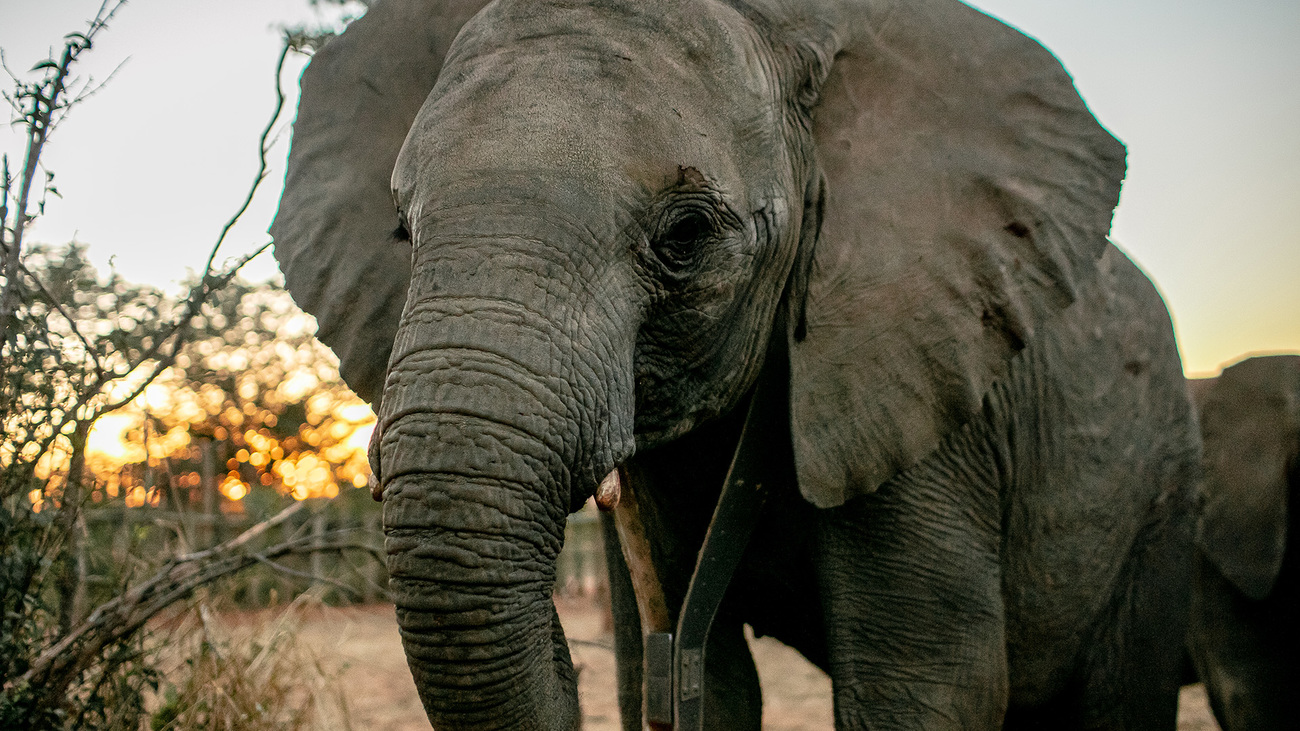Neil Greenwood
Jack the elephant: Saving the species, one individual at a time
Jack the elephant: Saving the species, one individual at a time
The dot on the satellite map isn’t a destination—it’s Jack, IFAW’s first long-term orphan-elephant-turned-conservation-operative (a.k.a. ‘snitch’). He reports back every four hours, 24 hours a day. Key staff and Jack’s former handlers at Wild is Life (WIL) in Zimbabwe can see exactly where he is even though he left the release site months ago.
There have been other operatives. Sizi, Matabele, Annabelle, Nora, and Nkanyezi were all orphaned elephants cared for by WIL, fitted with a tracking collar, and moved to the IFAW-Zimbabwe Elephant Nursery (ZEN) release site at the Panda Masuie Forest Reserve. These elephants left for extended periods of time, but they all eventually returned. Jack, on the other hand, has bid his calfhood farewell for good, joined a wild herd, and, as a result, is helping us save his species.

Creating a map to roam
The information we receive from Jack’s GPS collar is integral to our Room to Roam initiative. Jack moves in and out of Panda Masuie Forest with his herd, roaming over the core of the Kavango–Zambezi Transfrontier Conservation Area.
With every ping of Jack’s GPS, we learn about the dynamics and travel habits of his herd. Each time they’ve crossed between Zimbabwe and Botswana, they have taken particular routes. By pinpointing those paths, we can ensure those specific areas remain accessible and safe.
Jack is creating a roadmap, directing us to where we should focus our energy.

Rescue is in the details
But Jack wouldn’t be here if it weren’t for rescue, an often-under-appreciated arm of wildlife conservation. The broad stroke campaigns of traditional conservation tend to get more attention.
From the 30,000-foot view of saving a species, those broad strokes make a profound impact, but they cannot be the sole strategy. The ecosystem is a giant piece of machinery with millions of tiny parts working in concert with one another. If even just one screw falls out, that instability can cause more parts to get loose and the entire machine to fail. Rescue keeps the screws tight.
IFAW’s Room to Roam initiative began with a goal to save and protect one species: African savannah elephants. But more than 330,000 of these elephants roam the landscapes of East and Southern Africa. That’s more than 330,000 screws to keep in place. If we lose too many, the domino effect will bring the entire ecosystem to a screeching halt.
Preservation is a lot easier than restoration. Ask anyone who has lost a screw: Finding it and putting it back is tricky. But if we maintain the current screws while adding more, the machine gets exponentially more stable and less likely to fail in the future.
Every method, every angle, all at once
At IFAW, we take the holistic approach, attacking the issue of elephant conservation from all sides simultaneously. No one arm of the strategy is more important than the other, as they all work together.
The Room to Roam initiative will connect 12 already-protected clusters of land so elephants can safely migrate between them. With seven million people living within elephant roaming territory, the dangers are numerous—for elephants and humans. Working with communities to lease and secure private and community lands is just one part of the solution.
We educate the community and assist them in implementing ways they can safely cohabitate with elephant herds. We empower individuals to engage in natural resource management. Not only do we train rangers to keep poachers at bay; we also create job opportunities to give people alternative, more lucrative sources of income in place of poaching.
But all of this doesn’t happen overnight.
While these approaches are gaining considerable traction, individual elephants are still at risk. It can take years to secure a property, build job opportunities, and pass legislation. But we can save one elephant in an instant. Rescue is an immediate solution to a present problem. And it creates lasting ripples into the future.

Jack’s journey
In 2018, when rangers found Jack alone in a dried-up watering hole, they lifted him to safety, hoping that was all he needed. But after failing to reunite with the herd, he was taken back to WIL to be cared for at the IFAW-ZEN until he was ready to return to the wild.
Jack stayed there until May 2021, when he was translocated to the release site at Panda Masuie Forest. There he roamed with the resident herds under the watchful eye of human chaperones. When he met a wild herd, the chaperones took a step back so they could get to know one another.
Jack spent increasingly more time with that wild herd until 28 July 2021, when the herd moved on and he left with them. The GPS collar Jack wears not only helps our initiative, but also helps his handlers—his human family—still feel connected. January Gweshe, Jack’s main handler from ZEN, says all of his charges are his family. While he’s sad to see them go, he is proud of their courage to return to the wild.
The impact of one
As an alumnus of WIL, Jack will continue to snitch on his herd until he outgrows his GPS collar. Someday he will join with other bulls and roam the savannahs, looking to mate. Hopefully, one day, he will sire his own calf.
From the 30,000-foot view, you can see the human species working to save the elephant species. But when you get on the ground, you will see January fostering Jack, Jos caring for Sizi, and Roxy helping Annabelle—individual humans helping individual elephants. And you will see Jack, an elephant helping humans save his species.
We are confident our strategy will succeed, but we know it will take time. Through rescue, we can be assured that by the time Room to Roam hits its stride, there will still be a species left to protect—because saving the individual is saving the species.
Related content
Every problem has a solution, every solution needs support.
The problems we face are urgent, complicated, and resistant to change. Real solutions demand creativity, hard work, and involvement from people like you.